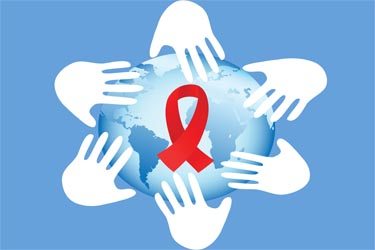Forgotten Women: UNAIDS, PEPFAR, and ‘Keeping Mothers Alive’
UNAIDS and PEPFAR recently released a report on progress toward achieving an AIDS-free generation. Though there has been great progress, the report almost completely ignores the second target of the groups' Global Plan: mothers.

Cross-posted with permission from The FCI Blog.
Two years ago, in July 2011, Joint United Nations Programme on HIV/AIDS (UNAIDS) launched a joint initiative with PEPFAR, the U.S. President’s Emergency Plan for AIDS Relief, to help achieve the goal of an AIDS-free generation. The ambitious, if clumsily named, “Global Plan towards the elimination of new HIV infections among children by 2015 and keeping their mothers alive” included two global targets:
- Reduce the number of new HIV infections among children by 90 percent
- Reduce the number of AIDS-related maternal deaths by 50 percent
Tuesday, UNAIDS and PEPFAR released a new report on progress in this important initiative. The report and accompanying press release highlight the very welcome news that seven countries (Botswana, Ethiopia, Ghana, Malawi, Namibia, South Africa, and Zambia) have reduced mother-to-child-transmission of HIV by 50 percent or more, with two additional countries (Tanzania and Zimbabwe) close to achieving that rate of reduction.
UNAIDS, PEPFAR, and all of their global and country partners deserve sincere congratulations for this tremendous accomplishment, achieved in a relatively short span of time. Progress toward the Global Plan’s first target has been truly impressive.
But their report almost completely ignores the plan’s second target, and in fact the second part of its long title: “…and keeping their mothers alive.” Perhaps a more accurate title for the initiative, at least as reflected in this report, would have been “Global plan towards the elimination of new HIV infections among children, and keeping their mothers alive just as long as they are pregnant or breastfeeding (but after that, not our concern…).”
OK, maybe I’m being a bit too harsh. But in the report’s 15 pages of text, there is at best one glancing reference (being generous) to the fact that women with HIV who are eligible for treatment should receive antiretrovirals because they have a right to treatment for the sake of their own lives and health. And the target for reducing maternal deaths is not even mentioned in the report’s text (though, to be fair, it is included as an indicator in the country profiles that make up the second part of the report).

What gives?
Well, the report makes it clear. “Many more women,” it states, have access to antiretroviral medicines to reduce the risk of HIV transmission to their children than four years ago [my emphasis, here and below].” And again, “Special attention is needed in all countries to ensure access to and retention on antiretroviral medicines for pregnant and breastfeeding women living with HIV to cut these numbers of children acquiring HIV infection.” The report betrays, alarmingly, a view of women exclusively as bearers and feeders of children.
It does, at a couple of points, vaguely acknowledge that women’s lives have value even when they are not carrying or breastfeeding babies. “The number of women acquiring HIV infection has to be reduced,” the report states, “and all women living with HIV eligible for antiretroviral therapy must have access to it for their own health.” But this commitment, for which many advocates have fought long and hard, must be translated into concrete action to prioritize antiretroviral (ARV) treatment for HIV-positive women who are not pregnant, or who have finished breastfeeding. Too often, still, these women do not have access to the life-saving medicines they need, or are dropped from programs when they no longer qualify through their children.
The report does, thankfully, acknowledge the significance of access to family planning as a means of preventing unintended pregnancy, and thereby of preventing infants from being born with HIV:
Reducing unmet need for family planning will reduce new HIV infections among children and improve maternal health. Increasing access to voluntary and noncoercive family planning services for all women, including women living with HIV, can avoid unintended pregnancies. Family planning enables women to choose the number and spacing of their children, thereby improving their health and wellbeing.
Kudos to UNAIDS and PEPFAR for being forthright about this crucial element of PMTCT (preventing mother-to-child transmission) programs, even though family planning is still far too rarely included in HIV/AIDS-prevention efforts.
But in other respects, the agencies need to do better, both in their programs and in the messages they send through reports like this one. Michel Sidibé and Eric Goosby, the heads of UNAIDS and PEPFAR, have both, in many speeches and statements, acknowledged the importance of women, and the right of women living with HIV to get ARV treatment for their own health. This report should have reflected that awareness, and that principle (as, for instance, this one in 2012 did). I hope and expect that the next progress report for the Global Plan will include a clear discussion of the link between HIV infection, maternal mortality, and women’s health more generally, and what the agencies are doing to address it.
